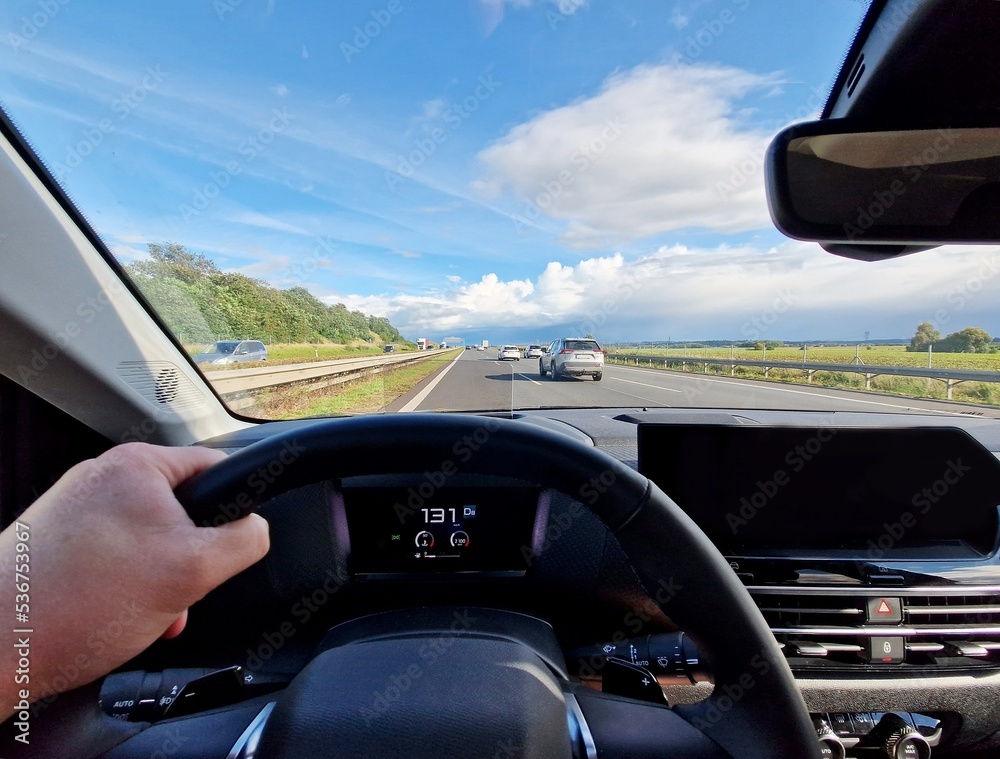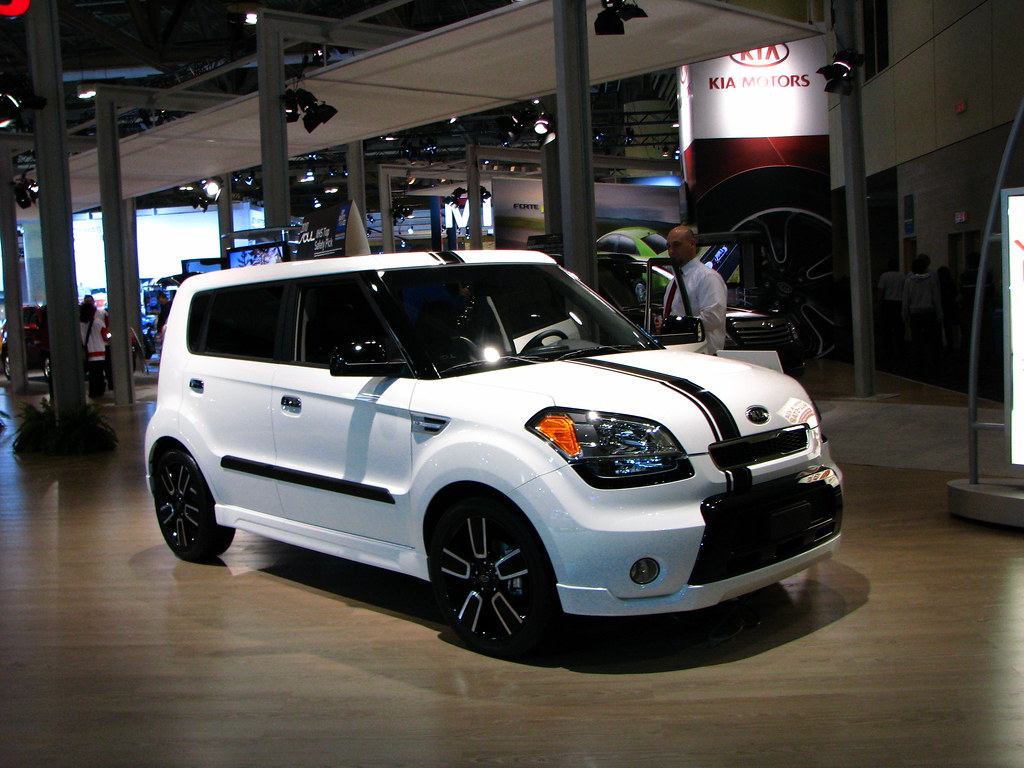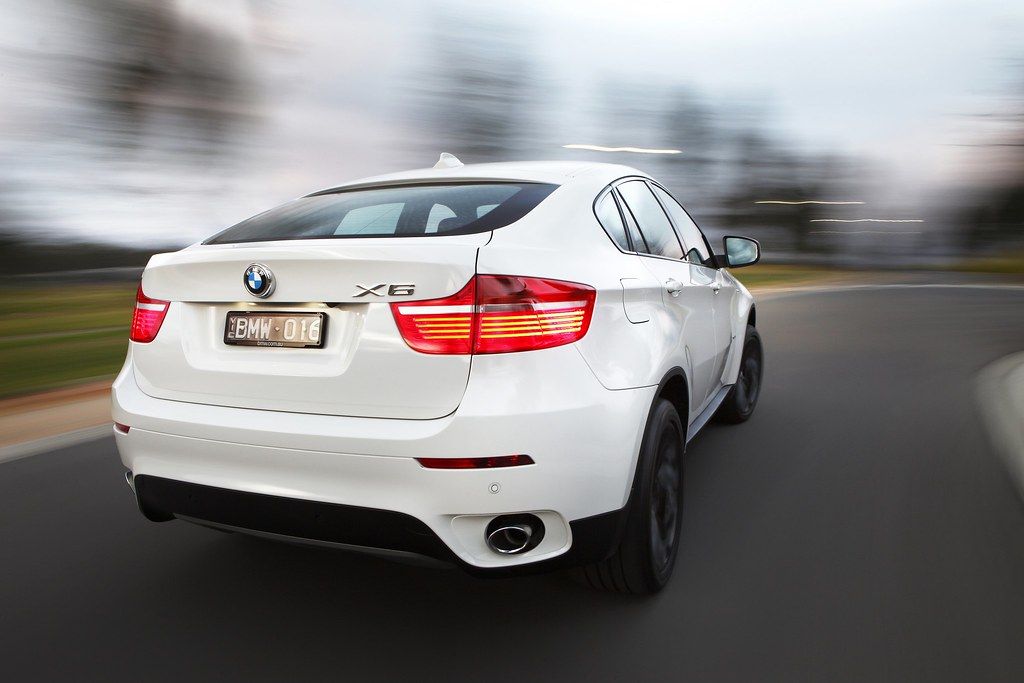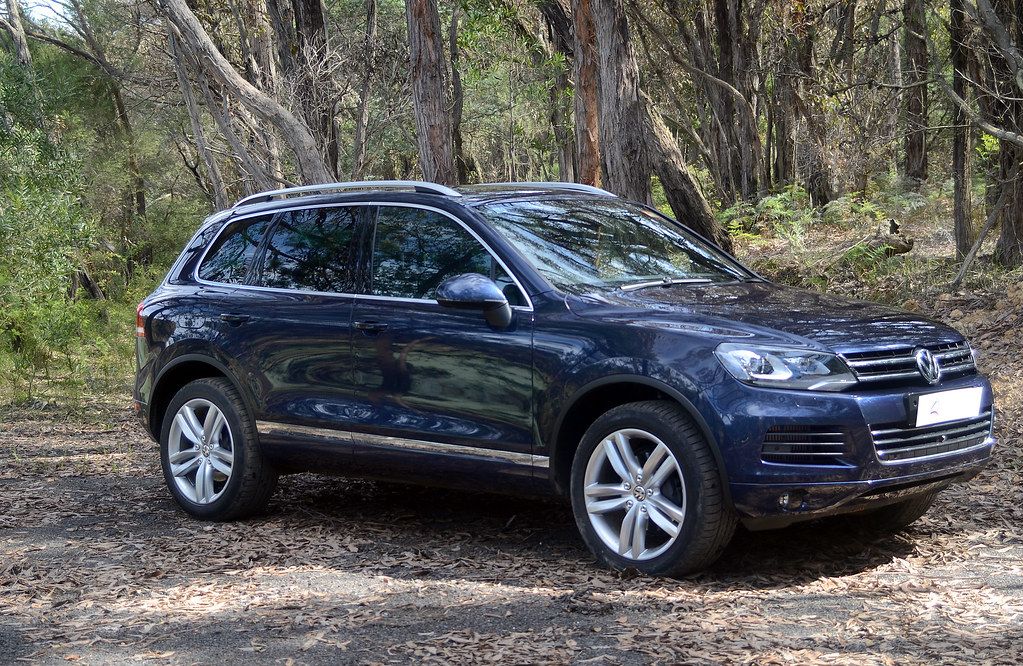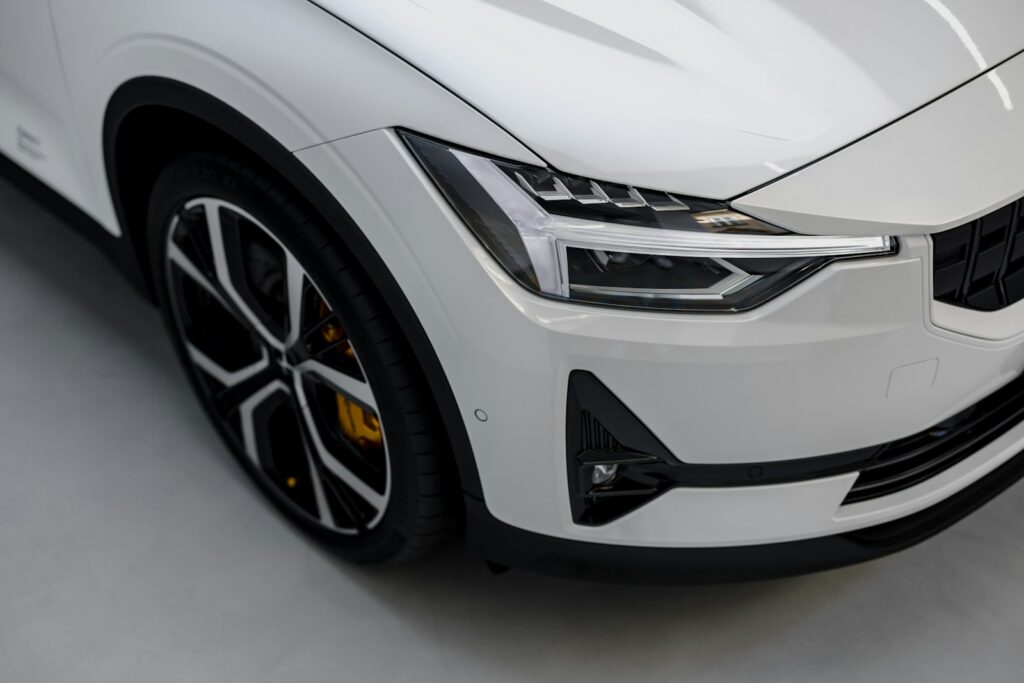
Not every journey on the road is a smooth, confident glide, and that’s perfectly fine. For many of us, the act of driving can bring a mix of exhilaration and apprehension, especially when navigating complex traffic or challenging road conditions. The good news is, modern automotive engineering has evolved dramatically, offering an incredible array of technologies specifically designed to make every driver feel more secure, competent, and ultimately, safer behind the wheel. We’re moving into an era where cars truly have our backs, acting as silent co-pilots ready to step in when things get a little wobbly.
Gone are the days when a new driver or someone with less confidence had to rely solely on their own reflexes. Today’s vehicles are brimming with advanced driver-assistance systems (ADAS) and thoughtful design choices that mitigate common driving anxieties and reduce the likelihood of mishaps. From intelligent cruise control that adapts to traffic flow to sensors that watch your blind spots, these innovations are democratizing driving, making it accessible and enjoyable for everyone, regardless of their natural aptitude for mastering the road. You no longer need to be a driving prodigy to commute with peace of mind; you just need to be smart about your choice of vehicle.
In this in-depth guide, we’re diving deep into the absolute best cars that serve as fantastic partners for those who might describe themselves as “bad drivers” – or perhaps, more accurately, drivers who simply appreciate an extra layer of support and collision control. Drawing on comprehensive vehicle analyses and real-world utility, we’ve identified 12 standout models that blend performance, practicality, and cutting-edge safety to create a driving experience that’s not just forgiving, but genuinely empowering. Let’s explore the first half of these remarkable machines, engineered to turn every journey into a confident adventure.
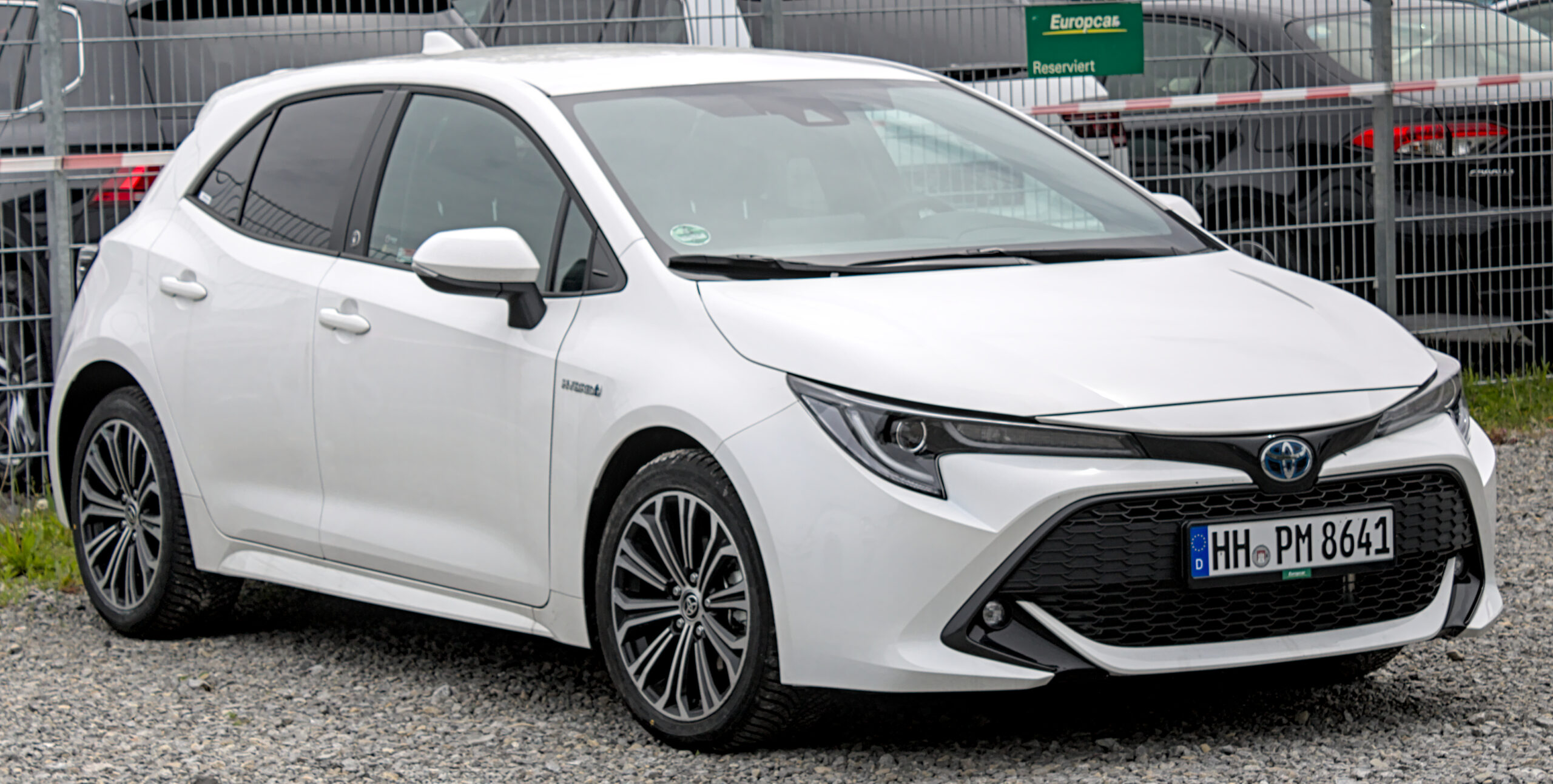
1. **Toyota Corolla Hybrid**When it comes to dependable, no-fuss motoring, the Toyota Corolla Hybrid has long been a front-runner, but for drivers seeking an extra layer of assurance, its appeal grows exponentially. This compact sedan is more than just a fuel-sipper; it’s a vigilant companion, always scanning the road ahead and around you to prevent potential collisions. At its core, the standard Toyota Safety Sense suite provides a comprehensive shield, integrating features that are crucial for mitigating common driving errors and unexpected scenarios.
Lane-keeping assist, for instance, is a game-changer for those moments when focus might waver slightly, gently guiding the vehicle back into its intended path. This proactive intervention helps prevent unintentional lane departures, which can be a common source of anxiety and risk, especially during long commutes or on busy highways. The system’s subtle guidance helps maintain a steady course, allowing the driver to feel more planted and less prone to drifting, thereby boosting overall confidence on the road.
Beyond its active safety features, the Corolla Hybrid offers a peace of mind that extends to its long-term ownership. Boasting a high J.D. Power reliability rating, this car means fewer worries about unexpected breakdowns or costly repairs, a significant factor for any driver, but particularly for those who prefer predictability and a hassle-free experience. This inherent reliability ensures that the vehicle is always ready to perform, consistently supporting the driver without adding further stress.
Adding to its clever engineering, the Corolla Hybrid features a regenerative braking system. This system doesn’t just slow the car; it doubles as a generator, recharging the battery during driving. For a less aggressive driver, this translates into a smoother, more predictable braking feel, reducing the abruptness often associated with conventional braking. The seamless energy recovery also contributes to the car’s impressive efficiency, meaning fewer stops at the gas station and more time focusing on the road ahead, a welcome benefit for any driver.
Car Model Information: 2023 Toyota Corolla SE
Name: Toyota Corolla
Caption: Twelfth generation model (2020, hatchback)
Manufacturer: Toyota
Aka: unbulleted list
Production: November 1966 – present
Class: unbulleted list
Predecessor: Toyota Publica
Categories: 1970s cars, 1980s cars, 1990s cars, 2000s cars, 2010s cars
Summary: The Toyota Corolla (Japanese: トヨタ・カローラ, Hepburn: Toyota Karōra) is a series of compact cars (formerly subcompact) manufactured and marketed globally by the Japanese automaker Toyota Motor Corporation. Introduced in 1966, the Corolla has been the world’s best-selling automobile of all time since 1997, when it surpassed the Volkswagen Beetle. Toyota reached the milestone of 50 million Corollas sold over twelve generations in 2021.
The name Corolla is part of Toyota’s naming tradition of using names derived from the Toyota Crown for sedans, with “corolla” Latin for “small crown”. The Corolla has always been exclusive in Japan to Toyota Corolla Store locations, and manufactured in Japan with a twin, called the Toyota Sprinter until 2000. From 2006 to 2018 in Japan and much of the world, and from 2018 to 2020 in Taiwan, the hatchback companion had been called the Toyota Auris.
Early models were mostly rear-wheel drive, while later models have been front-wheel drive. Four-wheel drive versions have also been produced, and it has undergone several major redesigns. The Corolla’s traditional competitors have been the Nissan Sunny, introduced the same year as the Corolla in Japan and the later Nissan Sentra, Subaru Leone, Honda Civic and Mitsubishi Lancer. The Corolla’s chassis designation code is “E”, as described in Toyota’s chassis and engine codes.
Get more information about: Toyota Corolla
Buying a high-performing used car >>>
Brand: Toyota Model: Corolla
Price: $22,981 Mileage: 44,071 mi.
Read more about: Navigating the Nuances: 10 Cars with the Most Reliable CVT Transmissions in 2025
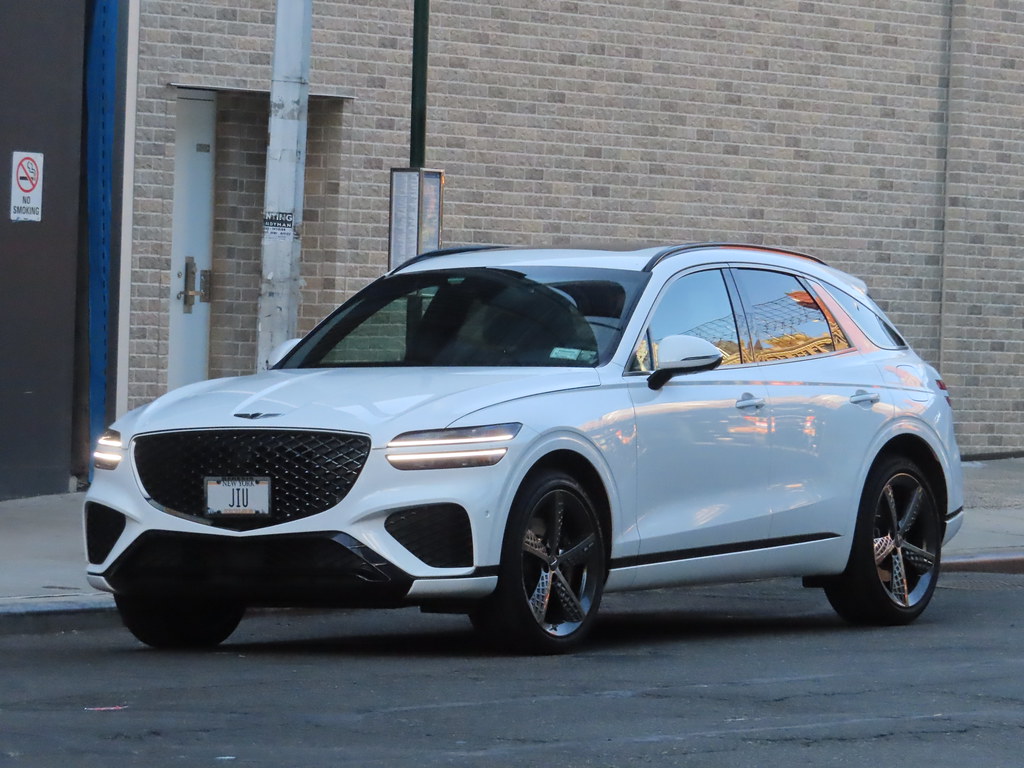
2. **Genesis GV70**Stepping into the luxury segment, the Genesis GV70 proves that sophistication and advanced driver assistance can go hand-in-hand, creating an environment that actively nurtures driver confidence. Every drive in the GV70 is designed to be an experience, beginning with personalized touches like fingerprint recognition and a burst of your favorite scent, establishing a calm and focused atmosphere before the wheels even turn. This attention to detail permeates its safety philosophy, making the GV70 an ideal sanctuary for those who value both elegance and robust support systems.
One of the GV70’s most impressive features is its smart cruise control, which doesn’t just maintain a set distance from the vehicle ahead; it learns your driving habits. This adaptive intelligence means the system can anticipate your preferences for acceleration and braking, providing a more natural and less intrusive assistance than more rigid systems. For a driver who might be less confident in maintaining consistent speeds or judging distances, this personalized cruise control reduces cognitive load, allowing them to relax and trust the vehicle to manage the flow of traffic smoothly.
Furthermore, the GV70 takes occupant comfort and ergonomic support seriously. Its seats aren’t merely plush; they actively adjust for perfect posture. Maintaining an optimal driving position is paramount for comfort and alertness, reducing fatigue on longer journeys and ensuring the driver has the best possible visibility and control. This proactive ergonomic support is a subtle yet significant way the GV70 assists, making the physical act of driving less taxing and more enjoyable, which in turn enhances concentration and reduces the likelihood of errors.
Underneath its stylish exterior, the Genesis GV70 is packed with advanced safety technology that quietly builds confidence. These systems work seamlessly in the background, providing layers of protection without overwhelming the driver with constant alerts. From sophisticated collision avoidance systems to subtle warnings, the GV70’s tech suite is designed to anticipate and react, acting as a discreet guardian. This comprehensive, yet understated, approach allows drivers to focus on the road with the reassuring knowledge that the car’s intelligent systems are always observing and ready to assist, making the driving experience profoundly more secure.
Car Model Information: 2023 Genesis GV70 2.5T
Name: Genesis GV70
ModelCode: JK1
Caption: 2021 Genesis GV70 Sport
Manufacturer: Genesis Motor
Production: 2020–present
ModelYears: 2022–present
Assembly: Ulsan
Designer: Ki-Euk Kim (exterior)
Class: Compact executive car,crossover SUV
BodyStyle: Sport utility vehicle
Layout: unbulleted list
Platform: Hyundai-Kia M platforms
Engine: unbulleted list
Motor: Synchronous motor#Permanent-magnet
Powerout: unbulleted list
Transmission: Automatic transmission
Battery: Lithium-ion battery
Wheelbase: 2875 mm
Abbr: on
Length: 4715 mm
Width: 1910 mm
Height: 1630 mm
Weight: unbulleted list
Charging: Vehicle-to-grid
Sp: uk
Categories: All-wheel-drive vehicles, Articles containing Korean-language text, Articles with short description, CS1 Korean-language sources (ko), Cars introduced in 2020
Summary: The Genesis GV70 (Korean: 제네시스 GV70) is a compact luxury D-segment crossover SUV manufactured by Korean luxury automaker Genesis, a luxury vehicle division of Hyundai. Internally codenamed JK1, it is the second SUV model from the brand after the mid-size GV80.
Get more information about: Genesis GV70
Buying a high-performing used car >>>
Brand: Genesis Model: GV70
Price: $37,439 Mileage: 26,005 mi.
Read more about: For the Family Man: The 10 Safest Crossover Bargains of 2025 You Can’t Afford to Miss
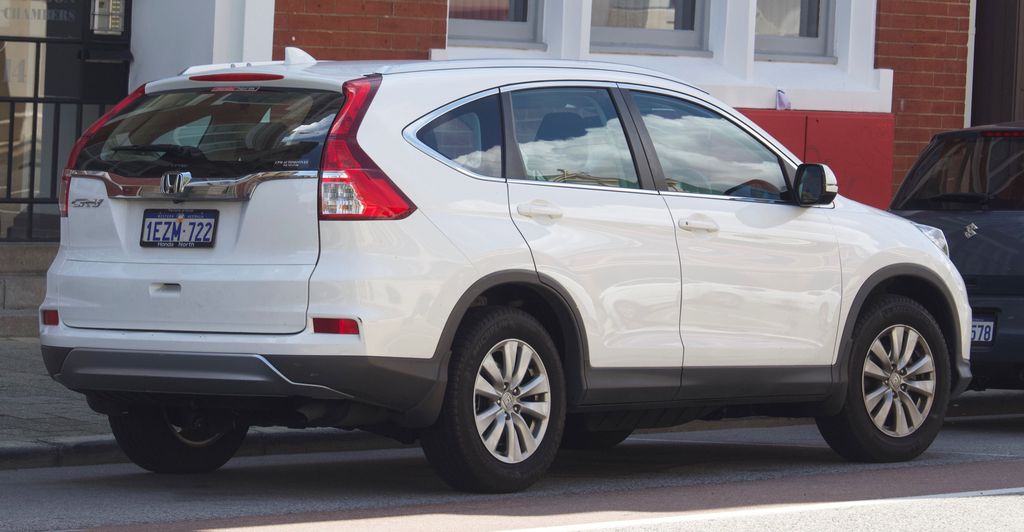
3. **Honda CR-V**The Honda CR-V has carved out a reputation as a practical and reliable compact SUV, and for drivers who prioritize stability and situational awareness, it shines even brighter. Its design and engineering choices are perfectly aligned with providing a reassuring and controlled driving experience, particularly when conditions become less than ideal. This focus on foundational driving confidence makes the CR-V an exceptional choice for those who might feel less at ease navigating unpredictable roads or busy environments.
A cornerstone of the CR-V’s stability is its Real-Time AWD system. This intelligent all-wheel-drive technology is constantly monitoring road conditions, and when it detects slippage or a loss of traction, it seamlessly distributes power to all four wheels. This immediate response holds the vehicle steady on slick roads, whether from rain, snow, or loose gravel, greatly reducing the stress associated with adverse weather. For a driver who might get anxious about losing control, this system provides a powerful sense of grip and security, making the CR-V a truly forgiving companion in varied conditions.
Visibility is another critical factor for driver confidence, and the Honda CR-V excels in this area with its wide visibility. The expansive glass area and thoughtful pillar design minimize blind spots, allowing the driver to have a clearer, more comprehensive view of their surroundings. This natural advantage is further augmented by blind-spot monitoring, an indispensable feature that helps you catch those sneaky cars hiding out of sight in adjacent lanes. Together, these elements dramatically reduce the stress of lane changes and merging, making the driving environment feel less crowded and more predictable.
Beyond its safety features, the CR-V understands the practical demands of daily life. Should you ever need to haul a mountain of groceries, sports equipment, or even small furniture, its cargo space rivals some midsize SUVs. This generous and versatile storage capability means fewer cramped trips and less fuss, allowing drivers to focus on the road rather than struggling with an overloaded cabin. The combination of steadfast stability, superior visibility, and practical utility makes the Honda CR-V a truly confidence-inspiring vehicle for a wide range of drivers and their needs.
Car Model Information: 2024 Honda CR-V EX AWD
Name: Honda CR-V
Caption: 2023 Honda CR-V e:HEV
Manufacturer: Honda
Aka: Honda Breeze (China, 2019–present)
Production: 1995–present
Class: Compact crossover SUV
BodyStyle: Sport utility vehicle
Layout: Front-engine, front-wheel-drive layout,Front-engine, four-wheel-drive layout
Chassis: Unibody
Predecessor: Honda Crossroad
Successor: Honda ZR-V
Categories: 2000s cars, 2010s cars, 2020s cars, All-wheel-drive vehicles, All Wikipedia articles written in British English
Summary: The Honda CR-V (also sold as the Honda Breeze in China since 2019) is a compact crossover SUV manufactured by Japanese automaker Honda since 1995. Initial models of the CR-V were built using the same platform as the Civic.
Honda began producing the CR-V in Japan and United Kingdom, for worldwide markets, adding North American manufacturing sites in the United States and Mexico in 2007, and Canada in 2012. The CR-V is also produced in Wuhan for the Chinese market by Dongfeng Honda, and also marketed as the Breeze in China for the version produced at Guangzhou by Guangqi Honda.
Honda states that “CR-V” stands for “Comfortable Runabout Vehicle,” while the term “Compact Recreational Vehicle” was used in a British car review article that was republished by Honda, associating the model name with the Sports Utility Vehicle abbreviation of SU-V.
As of 2022, the CR-V is positioned between the smaller ZR-V (marketed as HR-V in North America) — with which the CR-V shares a platform — and the larger North American market Passport/Pilot or the Chinese market Avancier/UR-V. It is currently Honda’s best-selling vehicle in the world, and the second best-selling SUV globally in 2020.
Get more information about: Honda CR-V
Buying a high-performing used car >>>
Brand: Honda Model: CR-V
Price: $29,961 Mileage: 33,628 mi.
Read more about: Navigating the Nuances: 10 Cars with the Most Reliable CVT Transmissions in 2025
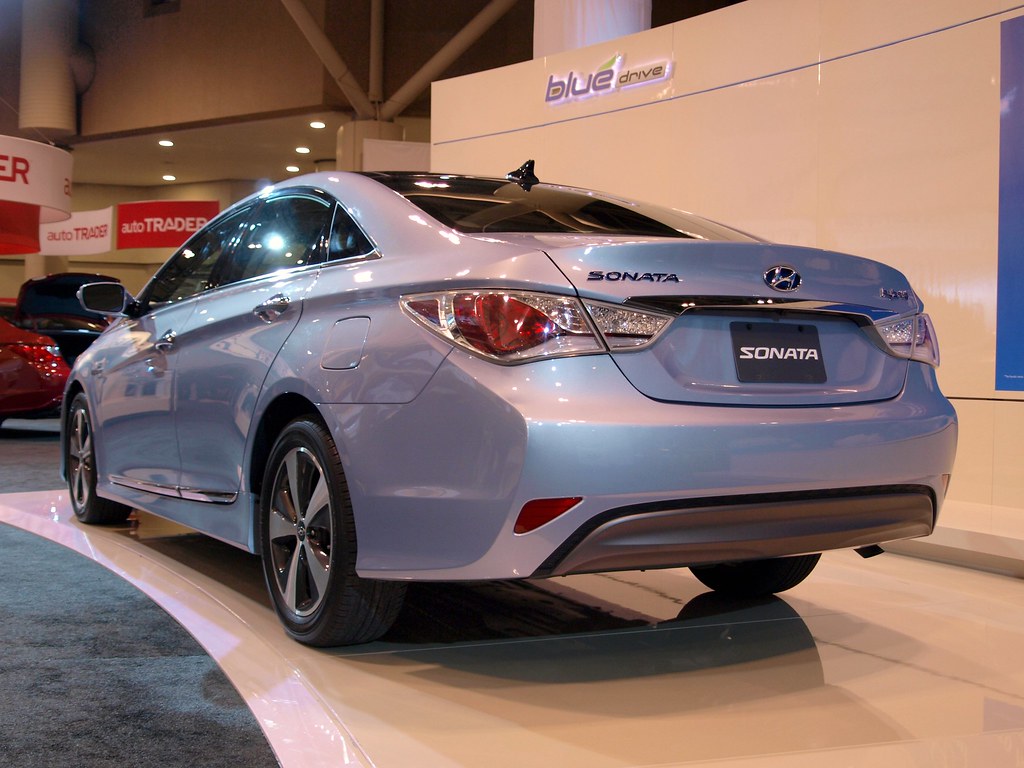
4. **Hyundai Sonata**The Hyundai Sonata, a sleek and stylish midsize sedan, is a veritable fortress of driver-assist technologies, making it an outstanding option for anyone who desires an extra layer of active intervention and peace of mind on the road. Hyundai’s dedication to intuitive safety is evident in its SmartSense suite, a comprehensive package designed to keep drivers alert and proactively prevent common errors, transforming potential mishaps into uneventful moments.
The SmartSense suite is particularly adept at maintaining lane discipline and protecting occupants even when stationary. Its lane-following assist actively helps keep the vehicle centered in its lane, providing continuous, gentle steering inputs that reduce the need for constant minor corrections by the driver. This feature is especially beneficial on highways, where maintaining a straight course can sometimes become monotonous and lead to drifting. Complementing this, safe-exit alerts gently warn you before opening a door into oncoming traffic or cyclists, a brilliant feature for city driving that prevents those all-too-common parking lot incidents.
For the driver who dreads the often-frustrating dance of parallel parking, the available Remote Smart Parking Assist is a revelation. This innovative feature gives you the ability to move the car forward or backward with your key fob, allowing you to guide the Sonata into or out of tight parking spots from outside the vehicle. This means no more scraping rims, no more awkward maneuvering, and no more holding up traffic while you struggle. It transforms a high-stress parking situation into an effortless, almost magical, experience, significantly boosting confidence in urban environments.
The combination of continuous lane-keeping support and intelligent parking assistance makes the Hyundai Sonata a truly forgiving vehicle. It’s designed to anticipate human error and provide clear, actionable warnings or direct assistance, ensuring that drivers can navigate busy roads and cramped parking lots with a new level of ease. This blend of active intervention and smart convenience makes the Sonata a compelling choice for those seeking a sophisticated sedan that prioritizes collision control and driver reassurance above all else.
Car Model Information: 2015 Hyundai SONATA SE
Name: Hyundai Sonata
Caption: 2024 Hyundai Sonata SEL (US)
Manufacturer: Hyundai Motor Company
Production: 1985–present
Class: Mid-size car
BodyStyle: sedan (automobile)
Layout: ubl
Predecessor: Hyundai Stellar
Categories: 1990s cars, 2000s cars, 2010s cars, 2020s cars, All Wikipedia articles written in American English
Summary: The Hyundai Sonata (Korean: 현대 쏘나타) is a mid-size car that has been manufactured by Hyundai since 1985. The first generation Sonata, which was introduced in 1985, was a facelifted version of the Hyundai Stellar with an engine upgrade, and was withdrawn from the market in two years due to poor customer reaction. While the nameplate was originally only sold in South Korea, the second generation of 1988 was widely exported.
The Sonata is currently manufactured in South Korea, China, and Pakistan. It was named after the musical term, sonata.
Get more information about: Hyundai Sonata
Buying a high-performing used car >>>
Brand: Hyundai Model: Sonata
Price: $11,485 Mileage: 59,515 mi.
Read more about: Navigating the Nuances: 10 Cars with the Most Reliable CVT Transmissions in 2025
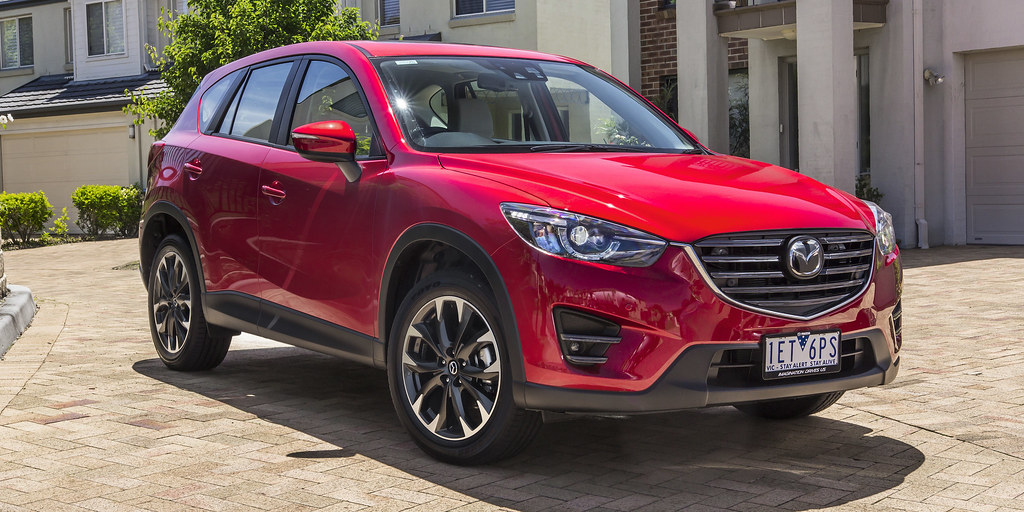
5. **Mazda CX-5**The Mazda CX-5 stands apart in the compact SUV segment by offering a driving experience that is both engaging and remarkably forgiving, proving that a vehicle can be fun to drive while still providing ample support for less confident hands. Mazda’s philosophy of “Jinba Ittai,” meaning “horse and rider as one,” translates into vehicles that respond intuitively, and the CX-5 masterfully applies this to create a confidence-inspiring connection between driver and road, even if you’re not a seasoned pro.
One of the CX-5’s most celebrated attributes is its responsive steering and innovative G-Vectoring Control (GVC). GVC isn’t about raw power; it’s about subtle finesse. It intelligently shifts minute amounts of engine torque when entering a corner, lightly loading the front wheels to improve grip and steering response. This sophisticated system allows you to glide through corners with surprising grace and precision, making the vehicle feel more stable and composed. For a driver who might otherwise feel uneasy about handling curves, GVC makes the experience smoother and more predictable, enhancing a sense of control without requiring expert input.
Beyond its dynamic capabilities, the CX-5 is equipped with advanced safety features that keep the driver well-informed and protected. Traffic Sign Recognition, for example, is a valuable aid, automatically displaying speed limits and other crucial road signs in the driver’s display. This helps ensure you stay informed and adhere to regulations, reducing the chances of unintentional speeding tickets or missing important navigational cues. It’s a subtle but effective way to lessen mental load and keep attention on the road itself.
Furthermore, in moments of emergency, the CX-5 has your back with its brake assist system. This feature recognizes when a driver is attempting an emergency stop but might not be applying maximum brake pressure. It then automatically augments braking force to ensure the vehicle stops as quickly and safely as possible. This extra layer of protection during sudden stops is invaluable, providing critical support when quick, decisive action is needed, transforming a potentially dangerous situation into a manageable one. The Mazda CX-5 truly embodies a philosophy where intuitive handling meets intelligent safety, crafting a driving experience that’s both pleasurable and profoundly reassuring.
Car Model Information: 2015 Mazda CX-5 Grand Touring
Name: Mazda CX-5
Caption: Second generation CX-5 (KF; 2024)
Manufacturer: Mazda
Production: 2012–present
ModelYears: 2013–present
Class: Compact crossover SUV
BodyStyle: SUV
Layout: unbulleted list
Predecessor: unbulleted list
Categories: 2020s cars, All-wheel-drive vehicles, All articles containing potentially dated statements, All articles lacking reliable references, All articles with dead external links
Summary: The Mazda CX-5 is a compact crossover SUV, produced by Mazda since 2012. A successor to both the Tribute and the slightly larger CX-7, it is Mazda’s first model to feature the “Kodo” design language and the first model to be fully developed with a range of technologies branded as Skyactiv, including a rigid, lightweight platform combined with a series of engines and transmissions to reduce emissions and fuel consumption.
Since 2019, the CX-5 is positioned above the smaller CX-30. As of 2022, depending on the region, the CX-5 is positioned right below the larger CX-50, CX-60 or the CX-8 within Mazda’s crossover SUV line-up.
Since 2014, the CX-5 has consistently been Mazda’s best-selling model globally. It achieved record sales in 2019, with 444,262 units sold worldwide. As of March 2022, cumulative sales of the CX-5 reached around 3.5 million units.
Get more information about: Mazda CX-5
Buying a high-performing used car >>>
Brand: Mazda Model: CX-5
Price: $11,991 Mileage: 124,693 mi.
Read more about: For the Family Man: The 10 Safest Crossover Bargains of 2025 You Can’t Afford to Miss
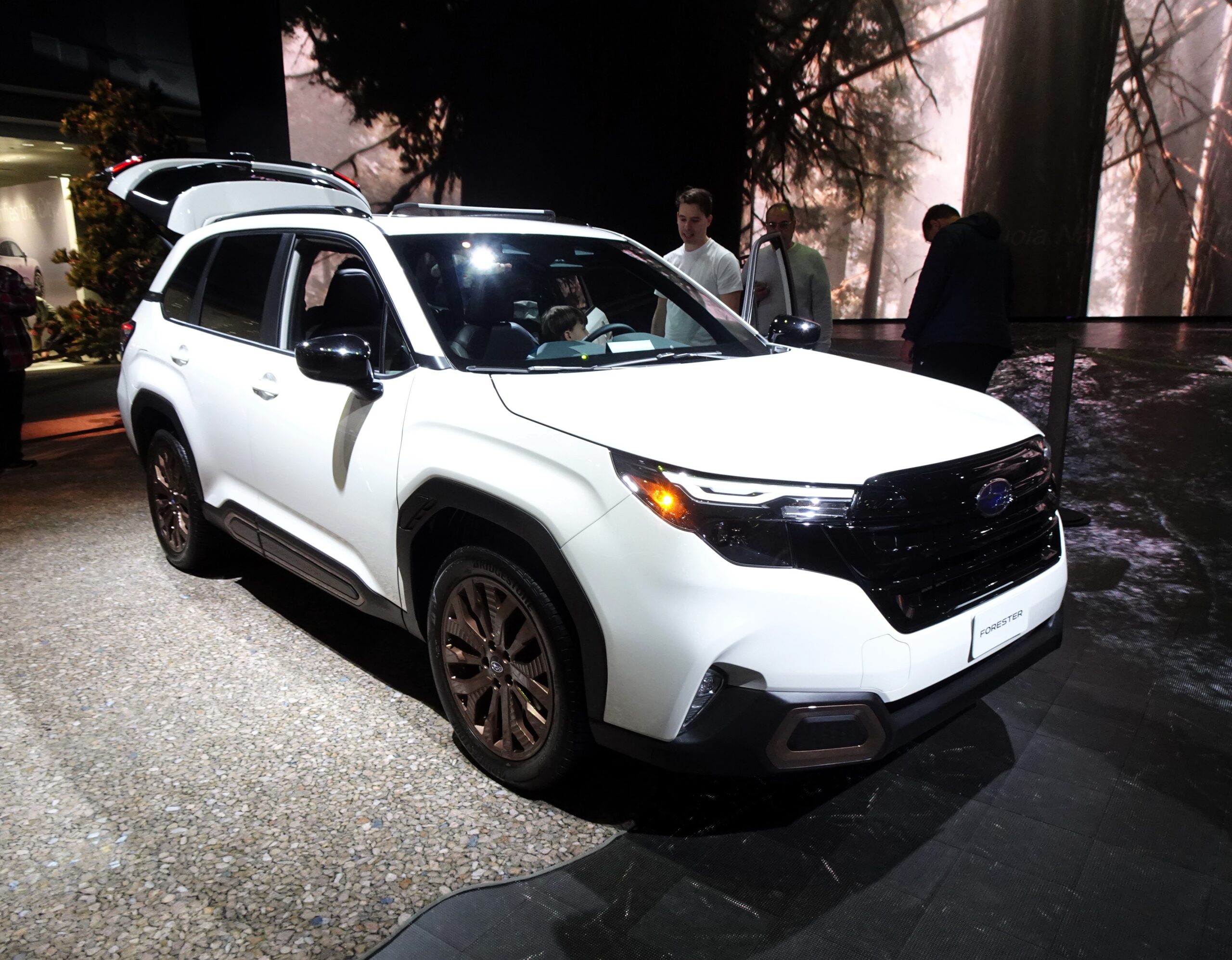
6. **Subaru Forester**For many drivers, particularly those who face varied terrain, unpredictable weather, or simply crave a commanding view of the road, the Subaru Forester has long been a trusted ally. It embodies a robust, go-anywhere spirit combined with a steadfast commitment to safety and ease of control, making it an outstanding choice for those who appreciate a vehicle that can handle nearly anything thrown its way, without demanding expert driving skills.
A primary source of confidence in the Forester comes from its thoughtfully designed seat elevation. This elevated seating position gives the driver a commanding view of the road, akin to being in a taller vehicle without the bulk. This enhanced perspective significantly reduces surprises from merging traffic or sudden stops, allowing for earlier identification of potential hazards and more time to react. Better visibility translates directly into greater awareness and a palpable sense of control, which is invaluable for any driver, but especially for those who feel more secure when they can clearly see their surroundings.
The legendary all-wheel drive system is perhaps the Forester’s most iconic feature, and it has been standard since day one, underscoring Subaru’s unwavering commitment to stability and traction. This symmetrical all-wheel-drive system ensures that power is constantly distributed to all four wheels, providing unparalleled grip and stability in all conditions—be it pouring rain, snowy roads, or the occasional unpaved path. This means you’re always ready for challenging surfaces, significantly reducing the anxiety of driving in inclement weather or venturing off the beaten path, transforming daunting drives into confident excursions.
For those rare moments when the road truly disappears, or an unexpected off-road adventure calls, the Forester’s X-MODE comes into its own. This specialized system optimizes the engine, transmission, and all-wheel-drive system for maximum traction on slippery surfaces like mud, snow, or even steep inclines. With X-MODE engaged, even the most rugged terrain feels less intimidating, as the vehicle intelligently manages power delivery and braking to maintain steady progress. This comprehensive capability, combined with its high seating and legendary AWD, makes the Subaru Forester a truly forgiving and confidence-boosting companion for any journey.
Having explored the foundational safety architectures of several leading vehicles, we now pivot to a new set of contenders that excel not just in preventing collisions, but in offering unique practical advantages, intuitive technologies, and thoughtful design elements. These are the cars that truly understand the nuances of a less-than-perfect driver, transforming everyday commutes into genuinely confidence-inspiring experiences. From ingenious parking aids to stress-reducing autonomous systems and adaptable interiors, these next six vehicles are masterclasses in making driving more accessible, enjoyable, and ultimately, safer for every skill level.
Car Model Information: 2015 Subaru Forester 2.5i
Name: Subaru Forester
Manufacturer: Subaru
Production: 1997–present
Class: Compact crossover SUV
BodyStyle: SUV
Related: Subaru Impreza
Layout: Front-engine, all-wheel drive
Predecessor: Subaru Bighorn
Categories: 2000s cars, 2010s cars, All-wheel-drive vehicles, All Wikipedia articles written in American English, All articles containing potentially dated statements
Summary: The Subaru Forester (Japanese: スバル・フォレスター, Hepburn: Subaru Foresutā) is a compact crossover SUV that has been manufactured by Subaru since 1997. The first generation was built on the platform of the Impreza in the style of a taller station wagon, a style that continued to the second generation, while the third-generation model onwards moved towards a crossover SUV design. A performance model was available for the second-generation Forester in Japan as the Forester STi.
Get more information about: Subaru Forester
Buying a high-performing used car >>>
Brand: Subaru Model: Forester
Price: $12,000 Mileage: 124,061 mi.
Read more about: Consumer Reports’ 2025 Top Picks: Your Definitive Guide to the Best Cars, SUVs, and Trucks for Value, Reliability, and Safety
7. **Kia Soul**For those navigating the dense concrete jungle, where every parallel parking spot feels like a challenge and tight alleyways loom, the Kia Soul emerges as an unexpectedly brilliant urban hero. Its distinctive, boxy silhouette isn’t just a style statement; it’s a fundamental design choice that dramatically improves sightlines. Drivers gain a panoramic view of their surroundings, minimizing traditional blind spots and providing a clearer, more comprehensive understanding of the urban chaos unfolding around them. This enhanced natural visibility is a powerful tool for reducing anxiety in congested environments, allowing for more proactive and confident maneuvers.
Beyond its inherent design advantages, the Soul integrates smart technologies that further bolster driver confidence. A standard rearview camera acts as an indispensable co-pilot when backing into challenging spaces or navigating busy parking lots. This crucial visual aid eliminates the guesswork, transforming what can often be a stressful, multi-attempt maneuver into a smooth, single-motion action. The clarity and precision offered by this camera system mean fewer bumps, scrapes, and exasperated sighs, making urban parking an almost enjoyable task for even the most hesitant drivers.
Adding another layer of proactive safety, the Soul includes a driver attention monitor. This intelligent system continuously observes driving patterns and provides gentle warnings if it detects signs of fatigue or inattention. In the hurly-burly of city driving, where constant vigilance is paramount, this feature is invaluable. It serves as a subtle, non-intrusive reminder to stay focused, helping to prevent the kind of momentary lapses that can lead to minor fender-benders or more serious incidents.
The Soul’s compact footprint, combined with these thoughtful features, makes it incredibly agile and easy to manage in crowded environments. Its dimensions allow it to slip into parking spaces that larger vehicles would simply bypass, and its nimble handling makes quick adjustments in traffic straightforward. This inherent maneuverability, coupled with its advanced driver aids, creates a vehicle that feels exceptionally responsive and predictable. It reassures drivers that they have full command, even when faced with the unpredictable nature of city streets.
Car Model Information: 2016 Kia Soul +
Name: Kia Soul
Caption: 2023 Kia Soul GT Line
Manufacturer: Kia
Production: 2008–2025
Class: Subcompact crossover SUV
BodyStyle: hatchback
Layout: Front-engine, front-wheel-drive
ModelYears: 2010–2025
Categories: 2010s cars, All articles with dead external links, All articles with unsourced statements, Articles containing Korean-language text, Articles with dead external links from December 2017
Summary: The Kia Soul (Korean: 기아 쏘울) is a subcompact crossover SUV manufactured and marketed by Kia from 2008 to 2025. Often described and marketed as a crossover since its introduction, the Soul is a hatchback with a box proportion and tall roof, which are designed to maximize its interior space. Despite its SUV-like styling, the Soul was never available with all-wheel drive, instead it is exclusively a front-wheel drive vehicle.
The Soul first appeared in 2006 in the form of a concept model displayed at the North American International Auto Show in Detroit. The production model made its debut at the Paris Motor Show in 2008. During its introduction, Kia stated that the Soul is aimed at the North American market, and targeted towards buyers in the 18 to 35-year old range.
The second-generation model was introduced in 2013 for the 2014 model year, which featured a larger exterior and interior dimensions along with a reworked chassis, while keeping its boxy styling. The Soul is currently in its third generation, which was introduced in 2018 for the 2019 model year. Since 2014, Kia has also marketed a battery electric variant as the Soul EV.
The name “Soul” comes from the homophone of Seoul, the city that hosts Kia’s headquarters.
On October 6, 2025, Kia announced that production of the Soul will end later in the month.
Get more information about: Kia Soul
Buying a high-performing used car >>>
Brand: Kia Model: Soul
Price: $9,000 Mileage: 129,564 mi.
Read more about: Renato Casaro, ‘Michelangelo of Movie Posters,’ Dies at 89: Remembering the Visionary Artist Who Defined Cinematic Imagination
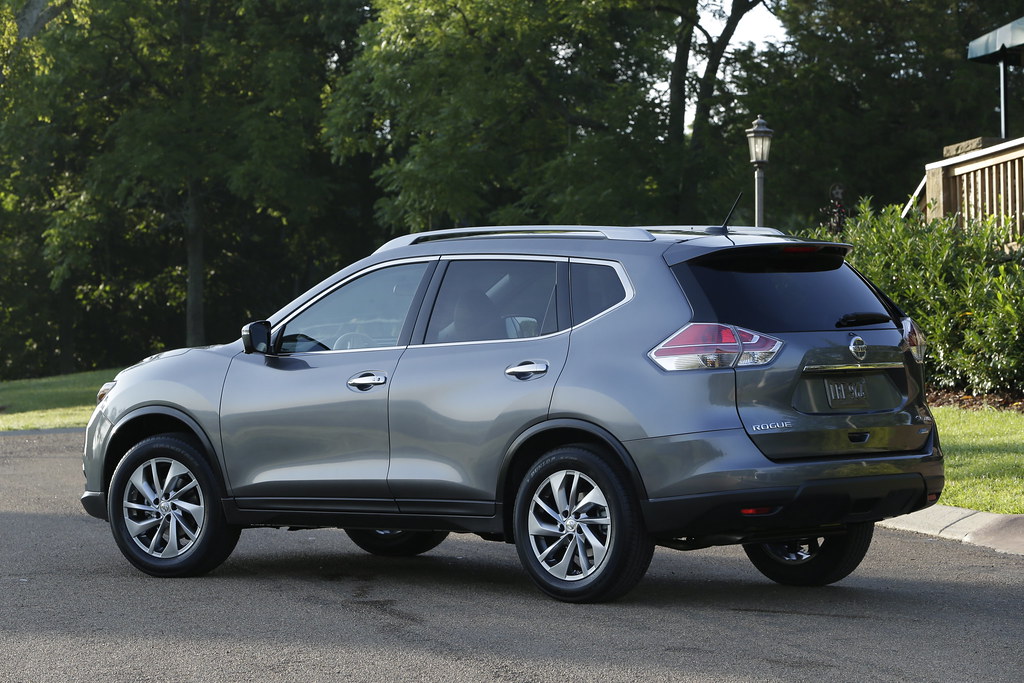
8. **Nissan Rogue**The Nissan Rogue stands out as a sophisticated yet approachable SUV, especially for drivers who desire a semi-autonomous helping hand and simplified daily tasks. At the core of its confidence-inspiring capabilities is the ProPILOT Assist system. This isn’t just basic cruise control; it’s an advanced semi-autonomous technology that diligently keeps the vehicle centered within its lane while maintaining a safe, predetermined distance from the car ahead. For drivers who find highway commutes taxing, constantly adjusting speed and steering, ProPILOT Assist significantly reduces mental fatigue, allowing for a more relaxed and controlled journey. It acts as an extension of the driver’s intent, providing a seamless and intuitive layer of support.
Parking, often a source of apprehension, is transformed into an almost effortless exercise thanks to the Rogue’s Around View Monitor. This innovative system provides a composite, 360-degree bird’s-eye view of the vehicle’s surroundings. It eliminates hidden obstacles and tight clearances from the equation, giving drivers unparalleled spatial awareness when maneuvering into or out of parking spots. No more craning necks or guessing distances; the Around View Monitor delivers precise visual information, allowing for confident, accurate parking every single time, even in crowded lots.
Beyond its advanced driving and parking aids, the Rogue incorporates thoughtful conveniences that subtly enhance the driving experience. A motion-activated liftgate, for instance, proves incredibly useful when juggling groceries or gear, allowing access to the cargo area with a simple foot motion. This small but significant detail reduces fumbling and potential distractions before getting on the road. Furthermore, haptic steering feedback provides subtle, tactile warnings directly through the steering wheel, offering intuitive guidance without overwhelming auditory alerts. These combined features underscore the Rogue’s commitment to making every interaction with the vehicle smoother, less stressful, and ultimately, safer, especially for hesitant drivers.
The overall practical design of the Nissan Rogue, from its intuitive controls to its comfortable interior, contributes to a less distracting driving environment. Everything is placed within easy reach and designed for straightforward operation, meaning less time searching for buttons or navigating complex menus. This focus on user-friendliness allows drivers to maintain their primary attention on the road ahead, minimizing opportunities for error and fostering a greater sense of calm and control during any journey.
Car Model Information: 2021 Nissan Rogue SL
Name: Nissan Rogue
Caption: 2023 Nissan Rogue SV (US)
Manufacturer: Nissan
Aka: Nissan X-Trail
Production: 2007–present
ModelYears: 2008–present
Class: Compact crossover SUV
BodyStyle: SUV
Layout: Front-engine, front-wheel-drive layout
Predecessor: Unbulleted list
Categories: 2010s cars, All-wheel-drive vehicles, All articles lacking reliable references, Articles lacking reliable references from November 2017, Articles with short description
Summary: The Nissan Rogue is a compact crossover SUV produced by the Japanese automobile manufacturer Nissan. It made its debut in October 2007 for the 2008 model year. Beginning in 2013 for the 2014 model year, the model has been merged with the X-Trail sold outside the North American market, making them identical.
As of 2023, the Rogue was manufactured at the Nissan Smyrna Assembly Plant in Tennessee, United States and at the Nissan Motor Kyushu plant in Kanda, Fukuoka, Japan. Between August 2014 and March 2020, it was also built at the Renault Samsung Motors plant in Busan, South Korea under contract.
Get more information about: Nissan Rogue
Buying a high-performing used car >>>
Brand: Nissan Model: Rogue
Price: $20,699 Mileage: 60,669 mi.
Read more about: The Top 8 All-Wheel Drive Hatchbacks and Versatile Compact Utility Vehicles Under $25,000 for Any Weather
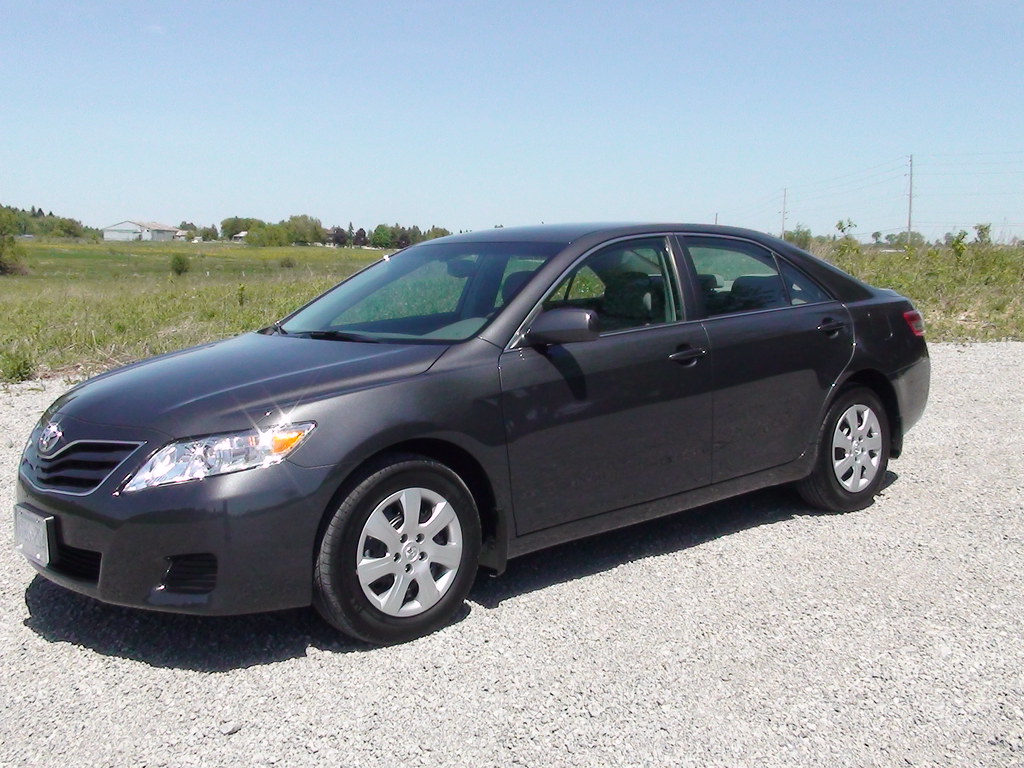
9. **Toyota Camry**For drivers who seek consistency, predictability, and an unwavering sense of peace of mind, the Toyota Camry remains an unassailable choice. This midsize sedan has built its reputation on rock-solid reliability, and for those who value an unostentatious yet incredibly supportive driving partner, it delivers in spades. The Camry doesn’t boast flashy, experimental tech; instead, it refines and perfects established safety and convenience features to create a profoundly stable and reassuring driving platform. Its inherent dependability means fewer unexpected issues, contributing to a driving experience free from the anxieties of potential breakdowns.
A standout feature that truly elevates the Camry’s appeal for confidence-seeking drivers is its full-speed adaptive cruise control. Unlike simpler systems, this advanced technology not only maintains a set speed but also automatically adjusts the vehicle’s speed to match the flow of traffic, even down to a complete stop and then back up again. This hands-off approach to managing speeds in congested conditions significantly reduces the mental burden on the driver, eliminating the need for constant brake and accelerator inputs. It smooths out the dynamics of stop-and-go traffic, transforming a potentially frustrating and error-prone scenario into a remarkably effortless one, allowing the driver to focus on steering and overall awareness.
Beyond its active driving aids, the Toyota Camry also offers a compelling practical advantage: demonstrably lower insurance costs for its class. This isn’t just a financial bonus; it’s an independent testament to the vehicle’s inherent safety and robust construction. Insurance companies assess risk, and the Camry’s favorable rates reflect its proven track record in accident avoidance and occupant protection. For any driver, but especially those who are more cautious, knowing their vehicle is recognized for its safety helps solidify that sense of security and trust in their daily commute. It’s a pragmatic benefit that complements the car’s technological prowess in collision control.
The Camry’s cabin is designed with an emphasis on ergonomic simplicity and comfort, reducing potential distractions. Controls are intuitive and logically placed, ensuring that vital functions are easily accessible without diverting attention from the road. The ride quality is consistently smooth and composed, insulating occupants from road imperfections and contributing to a relaxed atmosphere within the vehicle. This deliberate design philosophy ensures that the driver can remain focused and comfortable, further enhancing their confidence and ability to react effectively to unexpected situations, making every drive feel predictable and secure.
Car Model Information: 2023 Toyota Camry LE
Name: Toyota Camry
Caption: 2018 Toyota Camry Ascent (ASV70, Australia)
Manufacturer: Toyota
Production: March 1982 – present
Aka: ubl
Class: ubl
Layout: ubl
Predecessor: ubl
Successor: Toyota Avensis (T250)
Categories: 1990s cars, 2000s cars, 2010s cars, 2020s cars, All-wheel-drive vehicles
Summary: The Toyota Camry (; Japanese: トヨタ・カムリ Toyota Kamuri) is an automobile sold internationally by the Japanese auto manufacturer Toyota since 1982, spanning multiple generations. Originally compact in size (narrow-body), the Camry has grown since the 1990s to fit the mid-size classification (wide-body)—although the two widths co-existed in that decade. Since the release of the wide-bodied versions, Camry has been extolled by Toyota as the firm’s second “world car” after the Corolla. As of 2022, the Camry is positioned above the Corolla and below the Avalon or Crown in several markets.
In Japan, the Camry was once exclusive to Toyota Corolla Store retail dealerships. Narrow-body cars also spawned a rebadged sibling in Japan, the Toyota Vista (トヨタ・ビスタ)—also introduced in 1982 and sold at Toyota Vista Store locations. Diesel fuel versions have previously retailed at Toyota Diesel Store. The Vista Ardeo was a wagon version of the Vista V50.
Get more information about: Toyota Camry
Buying a high-performing used car >>>
Brand: Toyota Model: Camry
Price: $24,590 Mileage: 41,402 mi.
Read more about: Navigating the Nuances: 10 Cars with the Most Reliable CVT Transmissions in 2025

10. **Ford Escape**The Ford Escape, particularly its earlier models from 2020-2023, is engineered with a keen understanding of common driver anxieties, offering a suite of features that specifically target stressful maneuvers and enhance overall usability. It represents a practical yet sophisticated compact SUV that prioritizes ease of operation and accident mitigation, making it an excellent choice for drivers who value a hassle-free and confidence-boosting experience behind the wheel. The Escape’s approach to collision control is holistic, blending intelligent automation with fundamental ergonomic design.
One of the most noteworthy innovations in the Escape is the available Active Park Assist 2.0. For many drivers, parallel parking remains a daunting challenge, often leading to scraped rims, minor collisions, or simply avoiding the spot altogether. This advanced system takes the wheel (and the pedals) to precisely guide the vehicle into suitable parallel or perpendicular parking spaces, with minimal driver input. It transforms a nerve-wracking, high-skill maneuver into a simple, automated process. This capability not only prevents potential damage but also dramatically boosts a driver’s confidence in urban settings where tight parking is a daily reality.
Beyond its automated parking prowess, the Escape offers fundamental design advantages that enhance safety and user comfort. Its excellent visibility, characterized by expansive windows and thoughtful pillar design, ensures that the driver has a clear, unobstructed view of their surroundings. This natural sightline reduces blind spots and helps in proactively identifying potential hazards. Coupled with a low step-in height, the Escape makes getting in and out remarkably easy for drivers of all ages and mobilities. This ergonomic consideration reduces physical strain and contributes to a more pleasant driving experience, meaning less distraction from discomfort and more focus on the road.
Furthermore, the Escape’s infotainment system is widely lauded for its user-friendliness and intuitive interface. A complex or confusing infotainment system can be a major source of distraction, leading drivers to divert their attention from the road to wrestle with controls. The Escape’s straightforward layout and responsive touchscreen minimize this risk, allowing for easy access to navigation, media, and vehicle settings with minimal effort. This focus on reducing cognitive load and simplifying interaction with vehicle systems is a subtle yet crucial element in collision control, ensuring drivers can keep their eyes and minds firmly on the task of driving safely.
Car Model Information: 2018 Ford Escape SEL
Name: Ford Escape
Caption: 2021 Escape Hybrid (US)
Manufacturer: Ford Motor Company
Aka: Unbulleted list
Production: 2000–present
ModelYears: 2001–present
Class: Compact crossover SUV
BodyStyle: SUV
Layout: Unbulleted list
Predecessor: Nissan Terrano II
Successor: Ford Territory (China)
Categories: 2010s cars, 2020s cars, All-wheel-drive vehicles, All Wikipedia articles written in American English, All articles with dead external links
Summary: The Ford Escape is a compact crossover SUV manufactured and marketed by the Ford Motor Company since the 2001 model year. The first Ford SUV derived from a car platform, the Escape fell below the Ford Explorer in size; the Escape was sized between the Ford EcoSport and Ford Edge. The 2005 model year Ford Escape Hybrid was the first hybrid-electric vehicle from Ford, and the first hybrid produced as an SUV.
The first two generations of the Escape used the Ford CD2 platform (jointly developed with Mazda), leading to the release of the rebadged variants, the Mazda Tribute and Mercury Mariner; as with the Escape, both the Tribute and Mariner were marketed in North America (the Mariner was never marketed in Canada). In Europe, the Escape was initially branded as the Ford Maverick from 2001 to 2008 (replacing a Nissan-produced SUV).
Under the mid-2000s “One Ford” globalization strategy, the third and fourth-generation designs of the Escape have been unified with the Ford Kuga, designed by Ford of Europe. Sharing a common body and chassis underpinnings (and several engines), the Escape and Kuga are manufactured in their home markets. As with previous generations, the fourth-generation Escape is offered with gasoline, hybrid, and plug-in hybrid options. Outside of North America, the Ford Escape is marketed in Australia, China, and Taiwan.
In August 2025, it was announced that Ford will be discontinuing the Escape after the 2026 model year.
Get more information about: Ford Escape
Buying a high-performing used car >>>
Brand: Ford Model: Escape
Price: $12,987 Mileage: 72,015 mi.
Read more about: Chisinau: Unveiling the Enduring Spirit of Moldova’s Verdant Capital
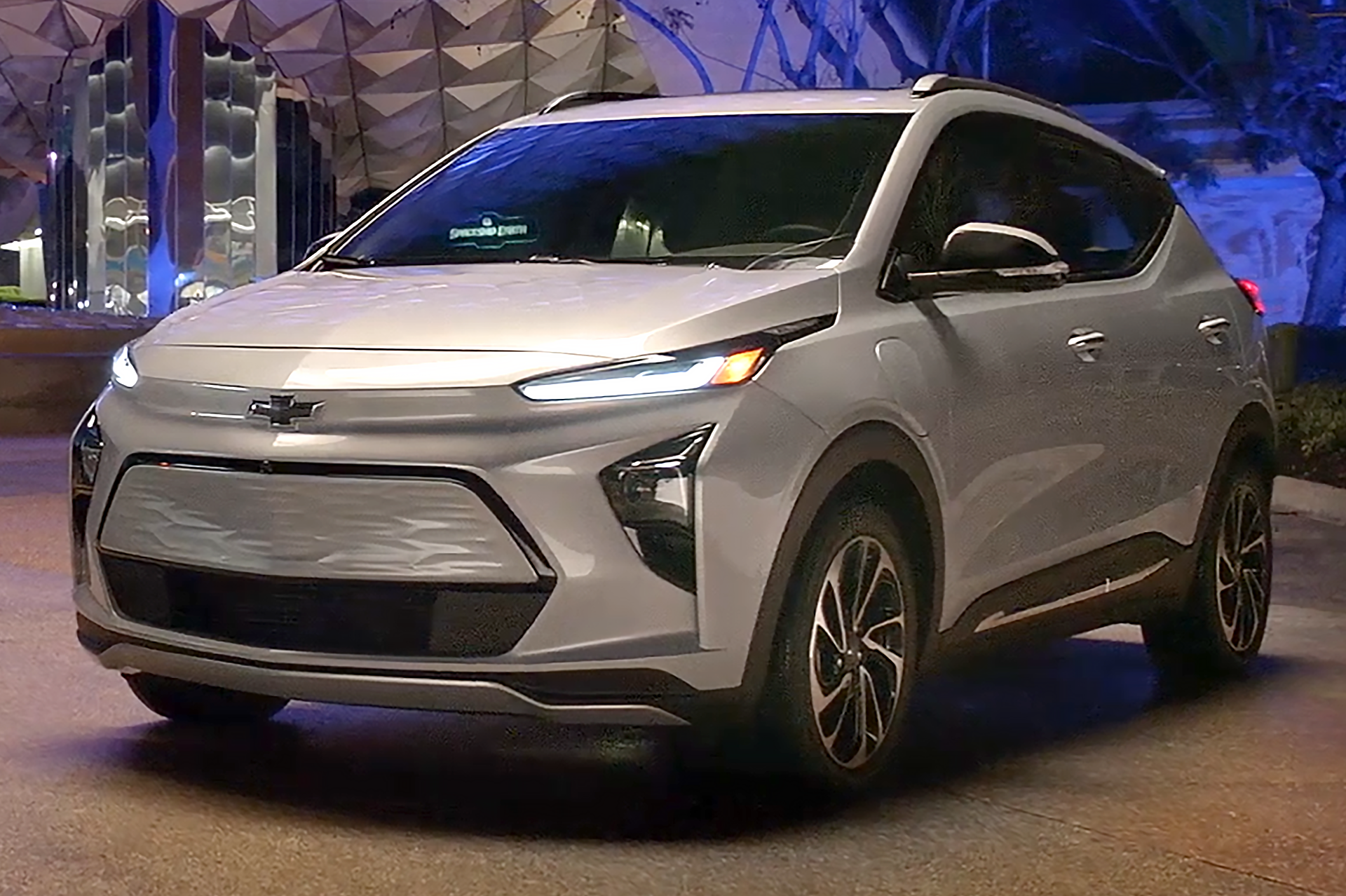
11. **Chevrolet Bolt EUV**The Chevrolet Bolt EUV carves out a unique niche as an accessible electric vehicle that inherently delivers a supremely relaxed and forgiving driving experience, perfectly suited for those seeking a tranquil and stress-free commute. Electric vehicles, by their nature, often provide a smoother power delivery than internal combustion engines, and the Bolt EUV capitalizes on this with its seamless, gear-free acceleration. This lack of traditional shifts means no sudden lurches or unpredictable power surges, contributing to a remarkably calm and predictable ride that won’t catch drivers off guard, enhancing a sense of confident control.
A standout feature that redefines the urban driving experience in the Bolt EUV is its one-pedal driving mode. This innovative system allows the driver to largely control both acceleration and deceleration using only the accelerator pedal. Lifting off the pedal progressively engages regenerative braking, slowing the vehicle down and even bringing it to a complete stop, all while recharging the battery. For stop-and-go traffic, this eliminates the constant back-and-forth between accelerator and brake pedals, reducing physical fatigue and mental effort. It creates a more intuitive and flowing driving rhythm, significantly easing the strain of congested commutes and minimizing abrupt movements.
For longer journeys, the Bolt EUV truly shines with its available Super Cruise hands-free system. This advanced semi-autonomous technology allows drivers to take their hands off the steering wheel on compatible highways, with the vehicle managing steering, acceleration, and braking. This is a game-changer for reducing driver fatigue and stress on extended drives, allowing for periods of genuine relaxation while still maintaining active supervision. It transforms potentially grueling highway stretches into surprisingly serene experiences, making long-distance travel far more manageable and less prone to errors caused by exhaustion.
The practical advantages of the Bolt EUV extend to its affordability, making advanced EV technology and its inherent driving ease accessible to a wider audience. This value proposition, combined with the smooth, quiet operation inherent to electric powertrains, creates a vehicle that prioritizes a serene and effortless driving experience. From its gentle acceleration to its hands-free highway capability and simplified stop-and-go traffic management, the Bolt EUV is fundamentally designed to minimize driver effort and maximize confidence, making every journey feel remarkably composed.
Car Model Information: 2019 Volkswagen Atlas 3.6L SE
Name: Chevrolet Bolt EUV
Motor: 200 hp
Abbr: out (EPA method)
Weight: 3679 lb
Height: 63.6 in
Width: 69.7 in
Length: 169.5 in
Wheelbase: 105.3 in
Charging: Alternating current
ElectricRange: 247 miles
Battery: unbulleted list
Transmission: 1-speed Electronic Precision Shift
Related: unbulleted list
Platform: GM BEV2 platform
Layout: Front-engine, front-wheel-drive layout
BodyStyle: SUV
Class: Subcompact crossover SUV
Assembly: unbulleted list
ModelYears: 2022–2023
Production: May 2021 – November 2023
Manufacturer: General Motors
Successor: Chevrolet Bolt (second generation)
Categories: All Wikipedia articles written in American English, All articles to be merged, Articles to be merged from October 2025, Articles with short description, CS1 Mexican Spanish-language sources (es-mx)
Summary: The Chevrolet Bolt EUV (short for “electric utility vehicle”) is a battery electric subcompact crossover SUV manufactured by General Motors under the Chevrolet brand, presented on February 14, 2021.
As a larger version of the similarly named Chevrolet Bolt EV, the EUV shares its BEV2 platform and powertrain.
Get more information about: Chevrolet Bolt EUV
Buying a high-performing used car >>>
Brand: Chevrolet Model: Bolt EUV
Price: $15,988 Mileage: 72,895 mi.
Read more about: Beyond the Lock: 14 Essential Home Safety Upgrades You’ll Be Grateful For
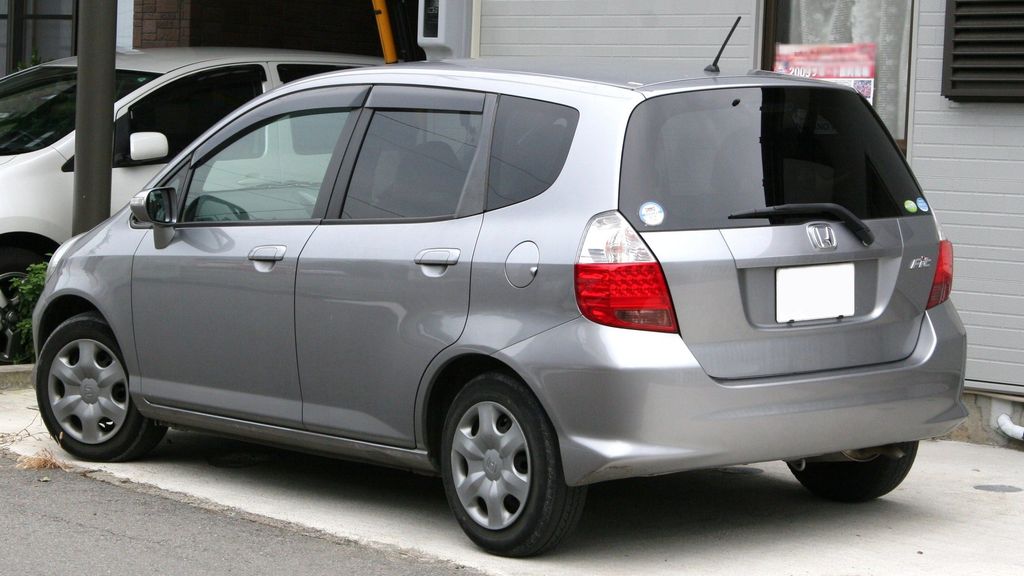
12. **Honda Fit**Often underestimated in its capabilities, the Honda Fit is a masterclass in clever design and practical utility, making it an ideal companion for drivers who prioritize maneuverability, ease of use, and adaptability in a compact package. This unassuming hatchback offers a surprising depth of features that directly address common driving challenges, transforming what might be stressful situations into surprisingly enjoyable ones, truly empowering less confident drivers. Its ingenious engineering makes navigating the urban landscape a genuinely fun and fuss-free experience.
One of the Fit’s most celebrated attributes is its ultra-tight turning radius. In congested cities, where tight turns and navigating narrow streets are commonplace, this agility is invaluable. It allows the Fit to pivot and maneuver with exceptional precision, making U-turns effortless and slipping into tight parking spaces seem almost magical. This superior nimbleness dramatically reduces the anxiety associated with confined spaces, offering a sense of command and control that belies its modest size. For drivers who find larger vehicles unwieldy, the Fit provides a refreshing sense of effortless agility.
Complementing its nimble handling, the Fit comes standard with a backup camera. This essential feature, now ubiquitous but particularly well-integrated here, provides a clear, wide-angle view of the area behind the vehicle. It makes backing out of driveways, reversing into parking spots, or navigating busy school zones significantly safer and less stressful. The precise visual feedback eliminates blind spots and the need for awkward neck-craning, allowing drivers to execute rearward maneuvers with confidence and accuracy. This prevents those frustrating and often costly minor bumps and scrapes that can quickly diminish a driver’s peace of mind.
Perhaps the most ingenious aspect of the Honda Fit, and a significant practical advantage for any driver, is its famed Magic Seat. This brilliantly designed seating system allows the interior to be reconfigured in over four distinct ways, accommodating everything from tall plants to long sporting equipment or bulky furniture. This unparalleled versatility means drivers are never forced to struggle with overloaded cabins or make multiple trips, which can lead to distracted driving. By making cargo management effortless and keeping the interior clutter-free, the Magic Seat ensures that the driver’s focus remains squarely on the road. This contributes to a safer and more confident driving experience, redefining compact car utility and driver support.
Car Model Information: 2020 Honda Fit LX
Name: Honda Fit/jazz
Manufacturer: Honda
Aka: Dongfeng Honda
Production: June 2001 – present
Class: Subcompact car
BodyStyle: hatchback
Layout: Front-engine, front-wheel-drive layout,Front-engine, four-wheel-drive layout
Platform: Honda Global Small Car
Predecessor: Honda Logo
Successor: Honda City#GN
Categories: 2010s cars, 2020s cars, ASEAN NCAP superminis, All-wheel-drive vehicles, All Wikipedia articles written in British English
Summary: The Honda Fit (Japanese: ホンダ・フィット, Hepburn: Honda Fitto) or Honda Jazz is a small car manufactured and marketed by Honda since 2001 over four generations. It has a five-door hatchback body style and is considered a supermini in the United Kingdom, a subcompact car in the United States, and a light car in Australia. Marketed worldwide and manufactured at ten plants in eight countries, sales reached almost 5 million by mid-2013. Honda uses the “Jazz” nameplate in Europe, Oceania, the Middle East, Africa, Hong Kong, Macau, Southeast Asia and India; and “Fit” in Japan, Sri Lanka, China, Taiwan and the Americas.
Sharing Honda’s global small car platform with the City, Airwave, first-generation Mobilio, Freed and HR-V/Vezel, the Fit is noted for its one-box or monospace design; forward-located fuel tank; configurable seats that fold in several ways to accommodate boot space in varying shapes and sizes— and boot volume competitive to larger vehicles.
Honda released hybrid petrol-electric versions of the Fit in Japan in October 2010 and in Europe in early 2011. In 2012, Honda released the Fit EV in the United States and Japan, a limited-production all-electric version based on the second-generation, widely regarded as a compliance car.
The fourth-generation model released in 2019 is currently sold in Japan, Europe, China, Taiwan, South Africa, Brunei and Singapore. Starting from 2020, the model was phased out in most Southeast Asian and Latin American countries, to be replaced by the larger City Hatchback, while it was withdrawn entirely from the North American market due to falling demand within the subcompact segment.
Get more information about: Honda Fit
Buying a high-performing used car >>>
Brand: Honda Model: Fit
Price: $16,280 Mileage: 70,292 mi.
Read more about: The DIYer’s Essential Guide: Unlocking Savings and Success with Used Car Parts
As we conclude our deep dive into these exceptional vehicles, it becomes abundantly clear that the automotive landscape has never been more supportive of drivers at every skill level. From sophisticated sensor arrays and adaptive cruise control that intelligently manage traffic, to thoughtful design choices like enhanced visibility and reconfigurable interiors that ease daily burdens, the cars on this list are engineered to be true partners. They don’t just protect you in a crash; they actively work to prevent one, instilling a profound sense of confidence and control that makes every journey, no matter how short or long, a more predictable and enjoyable experience. So, whether you’re a seasoned pro or someone who simply appreciates an extra layer of reassurance, remember that the right car can transform your driving life, empowering you to navigate the roads with unparalleled peace of mind. The era of the “bad driver” is truly over – welcome to the age of the smart car owner.

